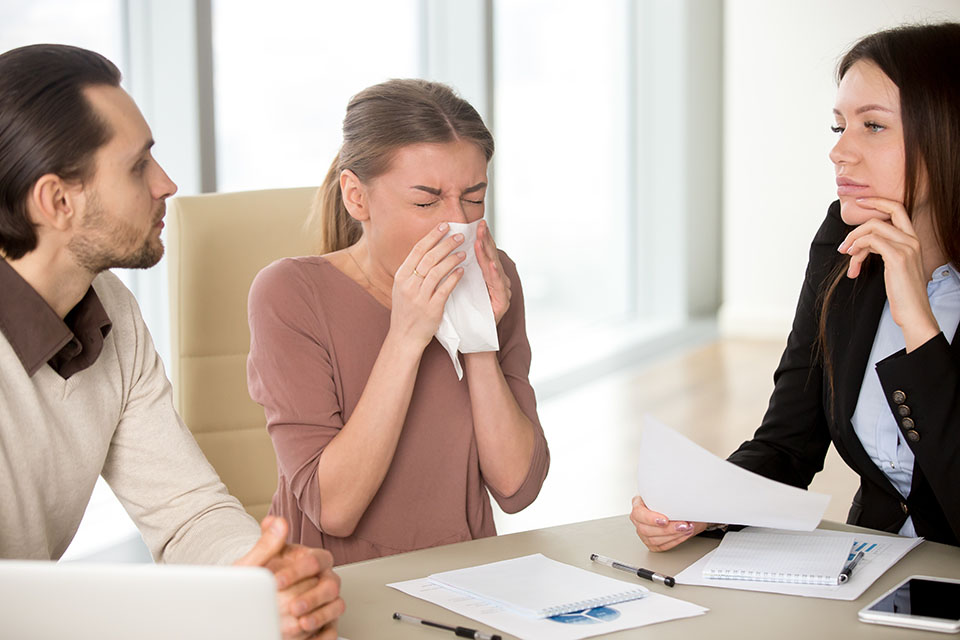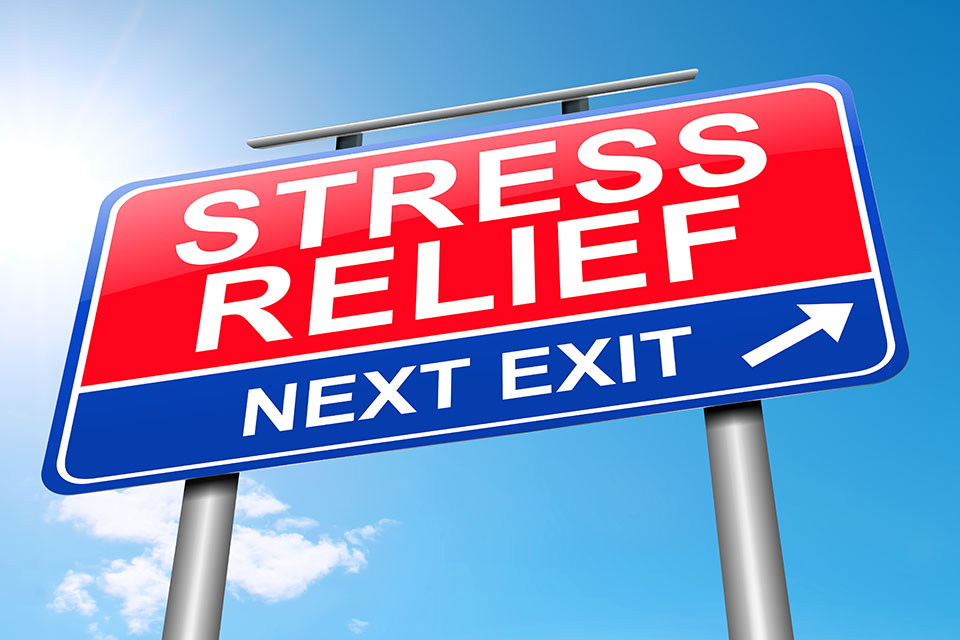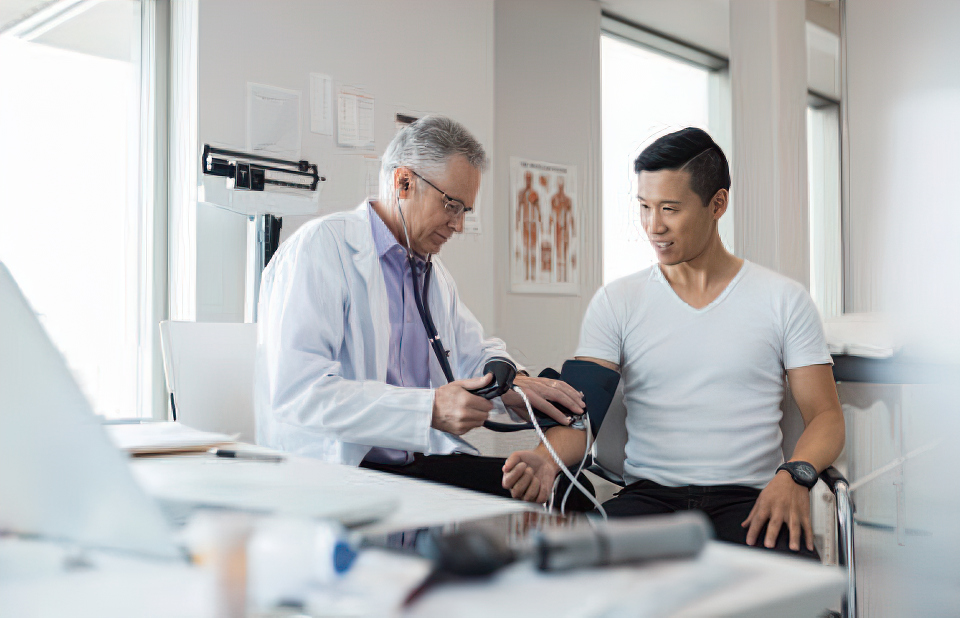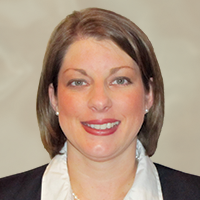Benefits Corner
The Benefits Corner this month features stories on Healthy Directions' Take Charge Diabetes Program, how to be heart healthy, tips on preventing the common cold, pointers on quick stress relief and simple steps to follow to reduce high blood pressure.
Take Charge Diabetes Program
Employees who took part in the Healthy Directions Program – and were identified as having diabetes/prediabetes – can voluntarily enroll in the Take Charge Diabetes Program through April 15th
Information has and will continue to be communicated to this employee population, only. Note that the program provides coaching via a registered dietitian to those enrolled as well as a reward for its completion. All results are confidential.
Be Heart Healthy

Start the day off right by eating breakfast. A healthy breakfast, consisting of a piece of whole wheat toast with fruit spread or a bowl of cereal and a piece of fresh fruit, will jump start your day and energize your body.
Eat healthy snacks, around 10 a.m. and 2 p.m., like a serving of cottage cheese, a piece of fruit, or a handful of low calorie pretzels.
Make heart healthy substitutions. Instead of picking fatty foods, pick foods with great flavor, which is what makes food worth eating and enjoyable. Use olive or canola oil instead of vegetable oil. Instead of using heavy cream in your recipes use evaporated skim milk.
Snuff Out the Sniffles

When it comes to the common cold, here’s hoping your family is “below average.” That’s because, on average, adults have two to four colds each year. Kids have even more! In fact, it can seem like a never-ending cycle as one family member’s stuffy nose, coughing and sneezing becomes a problem that everyone shares. To avoid spreading cold germs, follow these helpful hints:
- Wash your hands often and wash objects such as countertops and toys.
- Go solo. Don’t share cups or utensils or a common hand towel hanging in the restroom or kitchen.
- Go undercover. Use a tissue to cover your mouth and nose when you cough or sneeze — then throw it away.
Also, remember to drink plenty of fluids and get a lot of rest.
Quick Stress Relief

Got a minute? Then get a massage! In today’s fast-paced society, there is more than enough stress to go around. Everyone’s schedules are so cluttered it is a wonder we keep up but somehow we do. Still, there is a price — stress. Here are a few tips for relief you can do anytime, anywhere:
Scalp Soother - Place your thumbs behind your ears and spread your fingers on the top of your head. Move your scalp back and forth for 15 to 20 seconds.
Eye Easer - Close your eyes and place your ring fingers directly under your eyebrows near the bridge of your nose. Slowly increase pressure for 5 seconds then gently release. Repeat 2-3 times.
Shoulder Saver - Place your left hand on the right side of your neck by your shoulder. Press fingers firmly into the muscle while tucking your chin in toward your chest. Hold for 10 seconds and release and then repeat on the left side.
Helping Hand - Lace your fingers together leaving the thumbs free. Slowly knead your left thumb into the palm of your right hand for 20-30 seconds. Repeat on your left hand.
High Blood Pressure? Learn a few simple steps and start today.

If you have high blood pressure, you’re not alone. One in every three American adults has this condition, also called hypertension. To help bring your level down, work with your doctor to develop a plan. In addition to medication your doctor may have prescribed for you, the plan will likely include making healthy lifestyle changes such as eating right and losing extra pounds. The combination of these steps can help get you — and keep you — on track.
Learn more ways you can keep your blood pressure level at a healthy range.
NurseLine can help — call us today.
Call 1-800-504-5569
Sources:
U.S. Department of Health and Human Services. 2008 physical activity guidelines for Americans. Accessed: 8/17/15. http://www.health.gov/paguidelines/guidelines/default.aspx
Centers for Disease Control and Prevention. How much physical activity do adults need? Accessed: 8/17/15. http://www.cdc.gov/physicalactivity/everyone/guidelines/adults.html
National Heart, Lung, and Blood Institute. Tips for getting active. Accessed: 8/17/15. http://www.nhlbi.nih.gov/health/public/heart/obesity/wecan/get-active/getting-active.htm
This program should not be used for emergency or urgent care needs. In an emergency, call 911 or go to the nearest emergency room. The information provided through the nurse support service is for informational purposes only and provided as part of your health plan. The nurse cannot diagnose problems or recommend treatment and is not a substitute for your doctor’s care. Your health information is kept confidential in accordance with the law. This nurse support service is not an insurance program and may be discontinued at any time. The Centers of Excellence (COE) program providers and medical centers are independent contractors who render care and treatment to health plan members. The COE program does not provide direct healthcare services or practice medicine, and the COE providers and medical centers are solely responsible for medical judgments and related treatments. The COE program is not liable for any act or omission, including negligence, committed by any independent contracted healthcare professional or medical center.
© 2016 United HealthCare Services, Inc. PRJ1431 55444-042016 | 109663 120418





